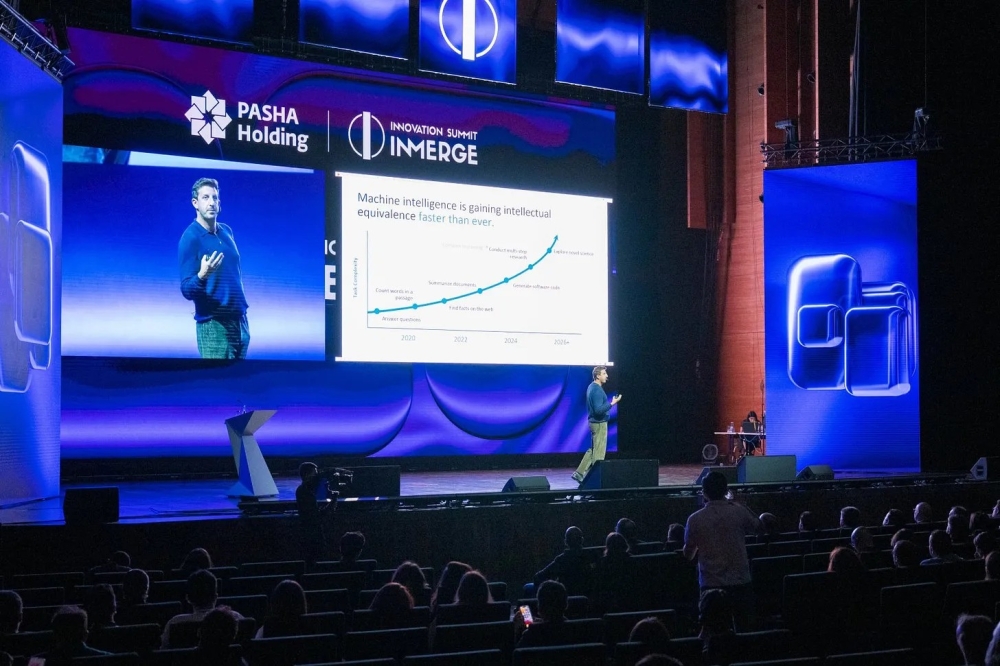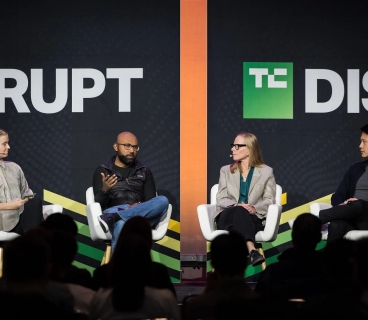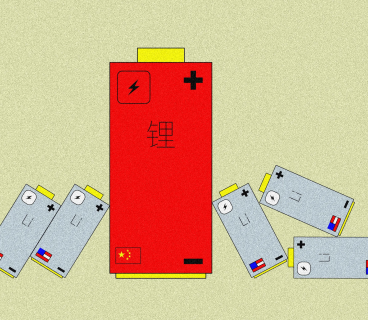In August, MIT’s Project NANDA released a new report showing that 95% of GenAI investments have so far yielded no returns. Only 5% of integrated AI pilots have managed to generate millions in value, while the majority remain “stuck” without measurable impact. Even though tens of billions have been poured into these experiments, it’s entirely reasonable for leaders to ask: “Have all these efforts been completely wasted?”
When I attended inmerge2025, one of the largest innovation events in our country, I felt a strange mix of anticipation and curiosity. I kept asking myself: What will happen? What will we learn from whom? Is there a platform where we can apply what we hear?
As I entered the hall, those feelings intensified. The atmosphere was different – as if it were charged with creativity and the energy of the future. People rushed around, greeting old friends, forming new connections. For me, this wasn’t just an event. It was incredible to see people I’ve known for years, to witness how they had changed, what they had achieved. Among them were individuals I had only observed from afar, hoping to meet one day – now they were right in front of me. Seeing everyone’s progress, hearing about their journeys, almost felt like opening a map to the future. Some spoke of successful startups, some shared ideas for international collaboration, while others discussed technologies that would inspire future generations. This is a stage where our country’s innovation adds value – and I am part of it.
Yet, in a corner of my mind, another thought lingered – MIT’s Project NANDA report. When I saw it, I was shocked. My first reaction was: “This can’t be true.” Then I thought: MIT employs brilliant minds, so perhaps I was mistaken.
The truth is, the problem isn’t AI itself, but how companies use it. In fact, this principle applies to any business challenge: if results aren’t achieved, it’s the strategy that needs to change.
What did Zack Kass tell us?
Where we were, and where we’ve come. Once upon a time, answering “Where are we?” was simple. But in 2017, eight Google researchers demonstrated that the era of linear models was over, and we needed to shift to parallel models resembling brain neurons. This led to better text models (GPT-2, GPT-3), image models (DALL-E, MidJourney), and video models (Sora). In 2024, GPT-4 even matched human-level performance on a mathematics Olympiad test. The simple truth now: we are building machines equal to or, in some cases, surpassing human intelligence.
The biggest leap: AI becoming affordable
More important than technology itself is its decreasing cost. Throughout history, whenever critical resources became accessible – water, food, electricity, the Internet – humanity made giant leaps forward. The same process is now happening with AI. In just five years, GPT-4’s cost dropped from $60 per million tokens to less than $1. This is not just technological progress; it’s democratization. AI is no longer a luxury reserved for large corporations. Anyone with internet access can harness its power. This opens new opportunities in education, business, science, and creativity. The greatest leap is that AI power is moving out of expensive labs and into society’s hands. The key question now is how we will use this power.
Integration stages
Enhanced applications – ChatGPT, released in November 2022, was initially designed to inspire technical leaders, but it quickly became the world’s most popular product.
Autonomous agents – In the near future, machines will perform tasks on our behalf: browsing, searching databases, handling everyday tasks.
Natural language operating systems – Sam Altman and Conny Aiv are developing devices without screens, where machines won’t learn from us; instead, they will understand us, reducing the digital divide.
Unmetered Intelligence
In 2021, OpenAI introduced the concept of unmetered intelligence. Back then, GPT-3 was expensive and slow. But we asked: If machines become better and cheaper, what will happen? Unmetered intelligence is not universal genius – it means everyone gains access to rich intellectual resources. Its impact on our lives will depend on our motivation and choices.
Risks and Concerns
- Risk of idiocracy – People may start to see critical thinking as unnecessary.
- K-curve and Gen Z paradox – Young people achieve more, yet loneliness and depression are at record levels.
- Malicious actors – As AI becomes cheaper, criminals gain more power. Policymakers must respond with regulation.
- Unemployment and the “zombie apocalypse” phenomenon – Many fear AI will take their jobs, but in reality, self-displacement is rare. In U.S. ports, workers’ main demand is no longer higher wages – it’s simply, “don’t automate our jobs.”
We are now on the threshold of incredible opportunities and serious risks. AI technology is brilliant, affordable, and rapidly integrating into our lives. But the key question remains: how will we use it? Creating a better future does not depend on technology alone – it depends on our motivation, choices, and humanity’s reinvestment in the physical world.












